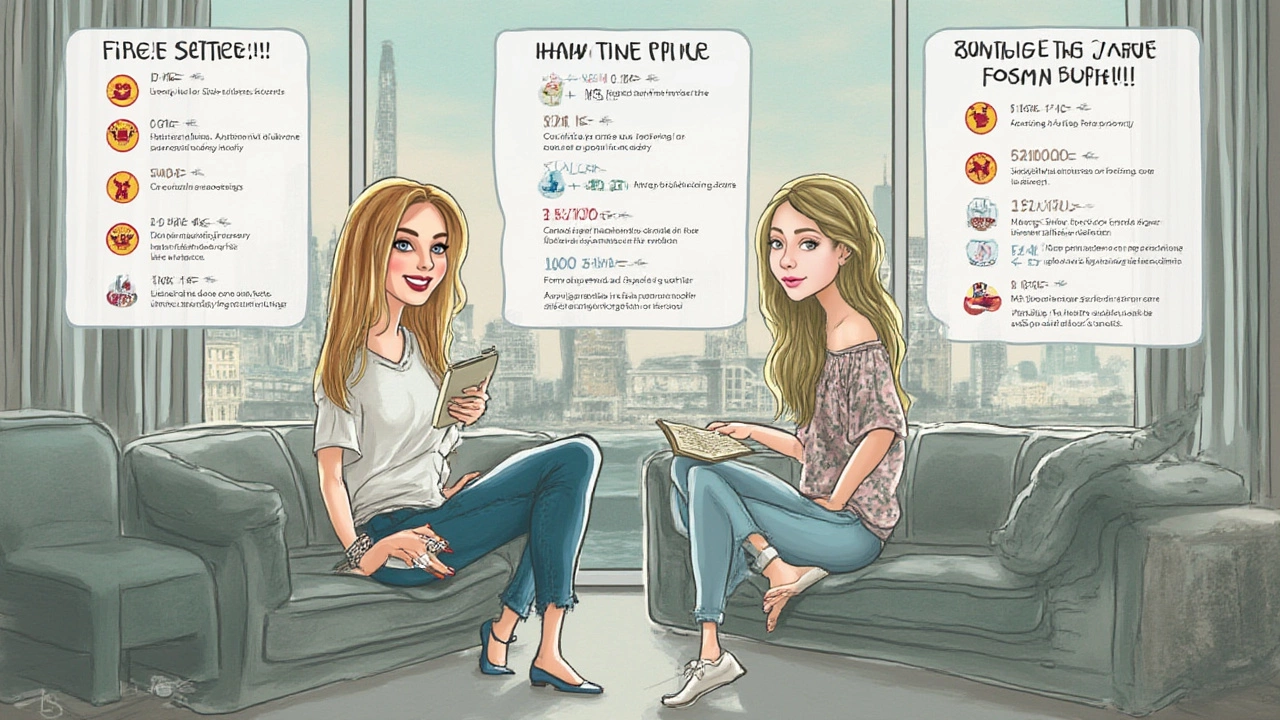Picture this: you just got home from a brutally long day, shoes flung, pizza box teetering on the armrest, and you collapse onto your sofa. But here’s the thing—whether it’s fiber-filled or foam-packed makes a world of difference for your comfort (and your mood). Most folks don’t think much about the guts of their furniture until that cushy seat suddenly turns lumpy or your back starts complaining. There’s more to this decision than meets the eye. If you’re torn between a fiber sofa and a foam sofa, let’s get honest about what really matters—because, trust me, the right pick means years of lazy weekends, naps, movie marathons, and maybe the occasional dog or toddler jumping in uninvited.
What Sets Fiber and Foam Sofas Apart?
So, let’s pull back the cushions and see what’s inside. Fiber sofas use synthetic or natural fibers—like polyester or down—packed in individual sections or cushions. Foam sofas, on the other hand, rely on slabs of spongy material (usually polyurethane foam). You’ll hear furniture salespeople hype one over the other, but digging into the nuts and bolts, they each have their quirks and perks. Fiber’s biggest win? That inviting, soft sink-in feel. When you crash onto a fiber sofa, it hugs your body, giving that ‘ahhh’ vibe that makes guests never want to leave. Some high-end fiber sofas even use a combination of feather and down for that cloud-on-earth effect. But keep in mind, cheap fiber fillings clump up, lose that bounce, and need frequent fluffing.
Now, foam is the go-to for structure lovers. Firm, supportive, and resilient, foam fills give you that neat, sculpted look (and let’s be honest—a better Instagram shot). High-density foam holds its shape longer, avoids sagging, and won’t send you hunting for your remote deep inside the couch crevices. The best part? Foam is consistent, so what you sit on in the store is pretty much what you get years later, if you choose quality. Here’s a quick breakdown for those who love a numbers game:
| Type | Typical Comfort | Durability (Years) | Maintenance |
|---|---|---|---|
| Fiber | Soft, plush | 5–7 | Fluffing needed |
| Foam | Firm to medium | 7–10 | Low |
And here’s a wild fact: the top furniture brands use cold-cured or HR (High Resilience) foam cushions to maintain bounce at least seven years, even with heavy use, while most ordinary fiber sofas start to sag or shift within five years, unless you’re religious about fluffing.
Comfort Showdown: The Real-Life Sitting Test
If comfort’s your top priority, forget about showroom fluff—what matters is how a sofa feels after a whole evening binge-watching, or even after surviving an in-law sleepover. Fiber sofas have their fans for a reason. The soft, squishy vibe is unbeatable for long stretches of movie-watching or for those prone to spontaneous sofa naps—you fall into a cocoon, which is hard to resist. Fiber also doesn’t make you sweat as easily as some dense foams, which is a life-saver during hot summers or if you’re someone who runs warm. But it’s not just about softness. Some folks complain that, by year three, their favorite fiber sofa starts developing grooves—right where they usually sit, as fibers shift inside the cushion. Unless you rotate and fluff those cushions religiously, you’re going to see (and feel) these valleys grow deeper every year.
Foam brings a different kind of comfort. Support is the big win. It’s perfect for those of us with back gripes or anyone who just wants a sofa that stays comfortable and flat, no matter how many people use it. High-density foam, the gold standard for support, is what orthopedic folks recommend if you hate slumping couches. Ever notice how hotel sofas still look sharp and hold up under thousands of visitors? That’s usually high-quality foam at work. But the firmness can be a turnoff for people who like sinking deeply into their seat. Lower-density foams do soften up—but that’s code for wearing out faster, sometimes within a few years. One secret tip: If you want a foam sofa but crave the coziness of fiber, mix the two. Some luxury sofas offer a foam core for support surrounded by a layer of fiber—best of both worlds, though you’ll pay a little more for the pleasure.
Another thing people forget: how a sofa wears in matters as much as how it feels new. Foam rarely changes much unless it’s low quality. Fiber always evolves as it gets squashed and moved around. So if you’re the type who wants your couch to look and feel the same from year one to year five, foam wins that round. For anyone who likes the idea of a ‘lived-in,’ relaxed-looking sofa—fiber can give you that casual, friendly look.

Durability, Upkeep, and Hidden Hassles
Picking a sofa isn’t just about the first sit—the real test comes with daily life: spilled coffee, dog hair invasions, wrestling matches with the kids, and that one friend who always sleeps over after parties. Durability is where foam sofas shine. High-density foam keeps shape, bounces back, and resists the notorious ‘butt indent’ that haunts cheaper models. Good foam sofas also make cleaning a breeze—most spills stay on the surface longer, and the cushion’s shape makes vacuuming easy. Even after years of heavy use, they usually look pretty close to new, as long as the outer fabric holds up.
Fiber sofas, on the flip, trade a bit of durability for comfort. If you have pets or an active household, fibers (especially natural ones) can mash down faster and hold onto smells and dust. They demand more regular attention—flip those cushions, shake out the stuffing, and plump it all up to keep things looking and feeling right. If you ignore this, don’t be surprised by lumpy cushions and a sad, lopsided look. For allergy-prone folks, that fiber filling can trap dust mites, while closed-cell high-density foam is more resistant. Here’s a chart that breaks down the maintenance work you’re signing up for:
| Type | Cleaning | Fluffing Frequency | Best For |
|---|---|---|---|
| Fiber | Vacuum, steam, spot clean | Every week | Light use, cozy vibes |
| Foam | Vacuum, wipe, spot clean | Rarely | Family, heavy use |
Don't forget climate has a secret role, too. Foam can harden in really cold rooms and soften up if it’s too hot, though unless you live in a place with wild temperature swings, you’ll rarely notice. Fibers are less finicky this way—but if moisture gets trapped inside, they can get musty pretty fast.
One overlooked fact? If you ever spill something nasty deep inside your fiber cushions, getting the smell or stain out is tough. Foam’s dense structure keeps most messes on the surface, making deep stains less likely. But once foam is damaged by liquid, it’s tricky to repair, so fast action is key either way.
Cost, Value, and Smart Shopping Tips
Let’s talk numbers—because nobody wants sofa buyer’s remorse. Foam sofas (especially ones with high-density, premium foam) cost more up front. But the long-term math can favor them. You can expect a good-quality *foam sofa* to last up to a decade without a sad sag in sight, while cheaper fiber sofas might look tired after half that time. If your priority is spending less today, fiber often wins, especially in entry-level models. Just be realistic: you’ll need a replacement or at least new filling down the line.
But here’s a hack: Some brands let you buy new inner fillings or covers, so you can refresh a fiber-filled sofa without replacing the whole thing. It’s an eco-friendly move and often a wallet-friendly one, too. Foam, though harder to swap out, usually won’t need attention for years if you get a quality build. Always look for the furniture industry’s durability guarantee—brands like IKEA, West Elm, and La-Z-Boy publish density numbers and warranties so you actually know what you’re paying for. As a simple baseline, good foam density is 1.8lb/cubic foot or higher.
If you care about the environment, natural fibers (like down and cotton) seem like the hero—but watch out, because feather filling needs even more maintenance and can cause sneezing fits if you’re sensitive. Many foam manufacturers now offer CertiPUR-US certified foams, which means no nasty chemicals and less off-gassing. The truth is, most people go for blended options: high-density foam for the seat and fiber toppers for back cushions or armrests. You get comfort, shape, and a bit more longevity without blowing your budget.
- Try before you buy: Always sit on a sofa for at least ten minutes. If possible, bring your favorite binge-watching partner for the real test.
- Check the return policy: Comfort is personal. Make sure you can swap a too-firm or too-soft buy.
- Think about your lifestyle: Kids? Pets? Frequent guests? Lean toward foam or at least a sturdy foam base.
- Ask about the filling blend: The best sofas often sneak in a combo of foam and fiber—don’t settle for mystery meat fillings.
- Remember the warranty: A confident manufacturer bets on cushion life. Look for 5+ year cushion warranties.
Smart shoppers always look beyond the outer fabric—what’s inside is where the comfort, value, and headaches (or lack of them) live. If you want a sofa to age gracefully along with you, make the filling your first question, not your last.
